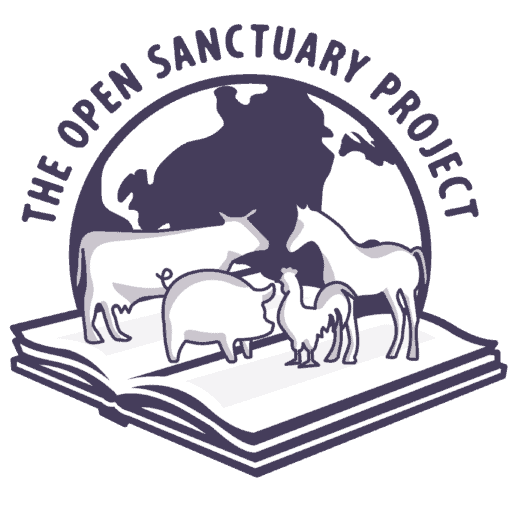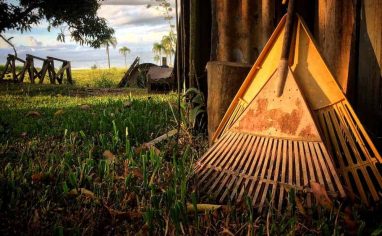
This Resource Is Meant to Be Read In Conjunction With Another Resource
Before reading our turkey-specific guidance, please read our detailed resource about preparing for resident introductions here. The following information is meant to supplement and build upon the important points covered within that resource.
TurkeysUnless explicitly mentioned, we are referring to domesticated turkey breeds, not wild turkeys, who may have unique needs not covered by this resource. are social animals who naturally live in flocks with other turkeys. Even though they will typically do best living alongside other turkeys, you still need to plan and conduct turkeyUnless explicitly mentioned, we are referring to domesticated turkey breeds, not wild turkeys, who may have unique needs not covered by this resource. introductions thoughtfully to ensure the safety and well-being of your residents! Below, we’ll talk about important things to keep in mind when preparing for and conducting turkey introductions.
Planning For Turkey Introductions
Consider Letting Poults Grow Up A Bit
If you are considering introducing a turkey poult (chick) to a flock of mature turkeys, it’s important to think carefully about when it is best to do so. The age at which you can responsibly introduce a poult to the rest of your flock will be dependent on many factors, including the personalities of all involved, their nutritional needs, the makeup of the flock, and your physical set-up. In most cases, you should wait at least until poults are fully feathered, though some caregivers prefer to wait until they are quite a bit older before introducing them to mature turkeys.
Of particular note, be sure to think about whether or not you will be able to continue to meet the poult’s nutritional and environmental needs if they move in with your flock. Also, remember that poults are more vulnerable to predation and may be able to fly out of enclosures that keep your mature residents contained. Some physical setups may require alterations to make them safe for turkey poults.
Be Careful With Mixed-Species Flocks!
The focus of this resource is turkey-to-turkey introductions, but we’d be remiss not to mention mixed-species avian flocks since they are so common. There are numerous things to consider before establishing mixed-species flocks to ensure your residents’ safety and well-being, but when it comes to turkeys, and especially turkey poults, one critical thing to consider is the risk of blackhead disease for turkeys living with chickens or other galliformesOrder of heavy-bodied ground birds including chickens, turkeys, guinea fowl, quail, and peafowl. You can read more about this topic here.
Consider Their Breed Type
When planning for a turkey introduction, keep in mind that large breed turkeys have different care needs than non-large breedA domesticated animal breed that has not been specifically engineered to grow as quickly as possible for the purpose of human consumption. In resources at The Open Sanctuary Project, "Heritage" breeds of turkeys, for instance, are "non-large breed", even if they are physically quite big. turkeys (also known as heritage breed turkeys), especially when it comes to diet, and more specifically, portion size. Large breedDomesticated animal breeds that have been selectively bred by humans to grow as large as possible, as quickly as possible, to the detriment of their health. turkeys must have their portions carefully managed to prevent obesity and obesity-related health issues, but non-large breed turkeys should typically be free-fed. While it’s not impossible to house these individuals together, in general, it’s going to be easier to house individuals who need their portions managed separately from those who should have free-choice access. If you choose to house them together, you’ll need to create a setup that allows both large breed and non-large breed residents to have appropriate access to food, which may require creating a space to place food where non-large breed turkeys can access it, but large breed turkeys cannot.
Consider Their Sex
Before conducting a turkey introduction, it’s also very important to think about the sex of the individuals involved. Not only will their sex potentially impact who they can safely live with, but it can also impact the actual introduction process. In general, introductions between males (tomsMale turkeys) tend to be more complicated than introductions between females, so careful planning and patience are crucial. Because males may fight with one another to establish dominance when they first meet, be sure to think carefully about each individual’s size, strength, and general health before conducting an introduction. For some individuals, it may be best to avoid the potential stress and physicality of a male-to-male introduction. We’ll talk more about introducing males to each other throughout this resource.
When planning introductions, keep in mind that large breed turkeys should generally be housed in same-sex flocks to protect females from injury. Due to their unnaturally large size, male large breed turkeys can seriously injure females (large breed or non-large breed) if they attempt to mount them and, therefore, should not live with female turkeys. Female large breed turkeys, like all large breed turkeys, are predisposed to foot and joint issues due to their body conformation. To avoid adding additional strain to their feet and joints, it’s typically best not to house them with any male turkeys who may mount them.
Non-large breed turkeys, on the other hand, can potentially live together in mixed-sex flocks, though it will be important to consider personalities and each resident’s health and to watch flock dynamics. In a mixed-sex flock, it’s usually easiest to have one tomA male turkey living with a few turkey hens. If overmounting becomes an issue, males may need to live separately from females (which may only be necessary seasonally – more on this below).
You can read more about safe cohabitation for turkeys here.
Tom Introduction Tips
In addition to avoiding springtime introductions (which we’ll talk more about below), conducting male-to-male introductions away from females entirely can increase your chances of success and help things go more smoothly. By housing males in spaces that prevent them from seeing or hearing female turkey residents, they may be more likely to get along.
While all residents must have ample space and should be provided with dynamic living spaces that encourage natural behaviors, when it comes to conducting successful male-to-male turkey introductions, this is imperative. In general, the more space, the better. This will allow them to steer clear of each other if they so choose. If there is an altercation, having plenty of space will hopefully allow them to get away from one another more easily. It can also be helpful to find ways to add visual barriers (such as with vegetation) while avoiding creating areas where a resident could get cornered by another individual. Visual barriers can help reduce tensions and prevent minor squabbles from escalating.
Consider The Season
Springtime hormones can have a major impact on flock dynamics, and therefore, Spring may not be the best time to conduct certain introductions. Hormones play a major role in tensions between males, and these hormones are highest during the spring. Though it may be complicated or inconvenient to avoid a springtime introduction, in all likelihood, the introduction will go much better if you can wait for their hormone levels to come down a bit. Even male turkeys who have been getting along fine for the rest of the year could have more issues during spring, and, in some cases, may even need to be separated from each other temporarily during this time.
Similarly, if you are conducting an introduction that involves a mixed-sex flock (which, as mentioned above, should typically only occur with non-large breed turkeys), avoiding a spring introduction may be wise. Males may be overly enthusiastic about mounting females, which could put females at risk of injury and can make the living situation more stressful. Even in all-female flocks, you may find that some hens are quite a bit more confrontationalBehaviors such as chasing, cornering, biting, kicking, problematic mounting, or otherwise engaging in consistent behavior that may cause mental or physical discomfort or injury to another individual, or using these behaviors to block an individual's access to resources such as food, water, shade, shelter, or other residents. during the spring, in which case, delaying an introduction may be wise.
Be Mindful Of The Weather And Environmental Conditions
In Preparing For And Conducting Resident Introductions, we stress the importance of considering the weather when planning introductions, but it bears repeating. While it’s important to consider all weather conditions, it’s crucial to understand that large breed turkeys are at an increased risk of overheating, and, therefore, it’s important to avoid conducting introductions when the weather is hot (or warm and humid). When conducting introductions, be sure to watch individuals closely for signs of overheating (such as open-mouth breathing and/or holding their wings away from their body), and pause the introduction if anyone is getting too warm. If you must conduct an introduction during the time of year when temperatures are high, be sure to do so early in the day when the weather is cooler.
Conducting Turkey Introductions
Once you’ve done all your prep work and are ready to conduct the introduction, you might opt to start by housing turkeys who are going to be introduced to each other in separate but adjacent spaces before fully integrating them (as described in Preparing For And Conducting Resident Introductions). If your physical infrastructure does not allow for this, consider setting up a temporary “integration kennel” in or adjacent to the resident flock’s living spaceThe indoor or outdoor area where an animal resident lives, eats, and rests.. You can use an exercise pen, large kennel, or something similar to create a safe, enclosed space for the new individual where they can see and communicate with the other turkey(s) without coming into physical contact with one another. Be sure to avoid anything with gaps large enough for individuals to make physical contact with each other and avoid anything with sharp edges that could result in injury.
The new resident can spend time in this transition space during the day and then move back to their own space in the evening (remember all turkeys need to be in a safe, predator-proof space overnight). Make sure the integration space has everything they need to be comfortable – food, water, enough space, proper traction, a nesting area, if applicable, and shade. We already stressed above the importance of paying attention to the weather, but when using an integration kennel outdoors, be sure to really consider how a resident will be impacted by weather conditions when inside the space, and avoid situations where they will be stuck out in uncomfortable conditions.
If opting for the separate but adjacent method, be sure to observe interactions closely to ensure this is a safe and appropriate setup. If individuals appear stressed, are overexerting themselves, or are at risk of injury from trying to fight through the shared barrier, you’ll need to pause the introduction and regroup.
Additional Considerations For Introductions Between Males
In some situations, starting with the separate but adjacent method may give individuals time to get acquainted with one another before physically sharing the same space, making the eventual physical introduction go more smoothly. However, particularly with introductions between male turkeys, you may find that residents are consumed with fighting through the shared barrier. While it’s important to pay attention to how individuals interact through a physical barrier, it’s also essential to recognize that these interactions may not be reflective of how they will interact without the barrier.
As opposed to a physical introduction in a shared space, meeting and interacting through a barrier can prevent resolution when individuals are trying to figure out where they stand in the social hierarchy. Because of this, you may see different behaviors and/or a different intensity of behaviors when individuals are separated by a physical barrier. Prolonged fighting through the barrier may simply mean that the separate but adjacent method isn’t beneficial in this particular instance. It does not automatically mean that the introduction is doomed. Each situation is different, so you’ll want to think carefully about what will be most appropriate for the individuals in your care, and then closely observe their reactions so you can make adjustments as needed.
Once you’re ready to allow the turkeys to be in a shared space with each other, it’s very important to closely monitor everyone’s reaction in case you need to intervene! There may be some minor altercations as everyone figures out their place in the social hierarchy, but as long as no one is overdoing it or at risk of being injured, it’s generally best to let them sort things out for themselves (while you closely observe the situation). However, if things get out of hand, you’ll need to break up conflicts quickly. Agitated vocalizations, posturing, circling, pecking, and chasing are not unusual, and particularly with males, you may also see chest bumping, wing slapping, and even kicking. While these behaviors are “normal”, prolonged or excessive pecking, chasing, wing slapping, and kicking can lead to injury and may require interventions, so be sure to watch introductions closely.
Even in the absence of physical contact that could result in injury or overexertion, be sure also to watch closely that residents are not exhausting themselves or showing signs of overheating. Of particular note, males who have just been introduced to females (or who have have been moved to a space where they can see females) may be so consumed with strutting (a physical display in which they puff up their feathers, fan their tail, drop their wings, elongate their snood, and change the color of their caruncles while intermittently taking a few quick steps and stopping) that they ignore the fact that they are overheating. If residents appear to be exhausting themselves or starting to overheat, you will need to intervene. In some cases, you may need to separate individuals and try again later.
During introductions, be sure to observe your residents’ body language and general interactions. Even if there is no physical altercation and no one is overheating, if one or more individuals appear to be very intimidated by someone else in the group, this may not be a healthy living arrangement for them. While individuals may settle in over time, if residents are constantly stressed and/or unable to engage freely in normal activities (for example, if they are constantly hiding or scared to come inside), they should be provided with a different living arrangement.
The New Gang In Town
While every situation is different, if you are introducing multiple new turkeys at once, this can sometimes make the process a bit easier.
Even if things appear to be going well, be sure to provide lots of supervision throughout the day (and in the coming days) to ensure everyone is getting along. Some situations that arise during the day may result in more tension than others, so ongoing supervision is key! Just because everyone is getting along well in their outdoor living space soon after the new resident arrives, does not mean that there will not be an altercation later on (possibly at meal time or if the new resident tries to enter the indoor space).
A Note On Nighttime Introductions
While some folks recommend introducing new residents at night when everyone is asleep, we feel strongly that all introductions should be supervised and, therefore, advise against this practice. Though it may work for some, there is also the possibility that the new resident will not be welcomed and will have no means to escape from the other turkeys. Even if you plan to check on them early in the morning, we just don’t think it is worth the risk of having residents in a situation where they are trapped with potentially territorial or confrontational residents without a caregiverSomeone who provides daily care, specifically for animal residents at an animal sanctuary, shelter, or rescue. there to intervene.
Things To Keep In Mind After Conducting Turkey Introductions
Once you’re confident that everyone is settled in and is safe to stay together without constant supervision, there are still important things to keep in mind as everyone adjusts to their new living arrangements.
Make Sure Everyone Can Eat Comfortably
Following an introduction, be sure to watch extra closely at meals to ensure everyone is coming up to eat and can do so comfortably. While this is important for all turkeys (and all residents, for that matter), be especially mindful of mealtime dynamics with large breed turkeys. While non-large breed turkeys will likely have access to food for the majority of their waking hours and can therefore wait until others have eaten if they do not feel comfortable eating at the same time, this is not the case with large breed turkeys. Because they are not free-fed and only have limited access to food, you really need to make sure they can get their fair share. This may require adding additional areas for them to eat so they can keep their distance from others or physically separating them from the rest of the flock so they can access their food portion without the stress of having others around.
Overnight Accommodations
Sometimes newly introduced turkey residents will get along just fine during the day when they have more room to spread out and avoid each other, but will show signs of discord when closed in overnight. Pay close attention to how everyone behaves after being closed in for the night – if the new resident appears anxious or other residents start pecking at them, offer the new turkey(s) a separate sleeping space (preferably within or adjoining the flock’s living space, if possible) – just make sure they have a safe place to sleep and that other residents cannot jump or fly into this space.
It’s Not Just Overnight
If there are other times when residents must be closed inside, for example, during dangerously cold weather or in preparation for health checks, be sure to consider if any separations are needed to ensure everyone’s safety and well-being.
While following the guidance above (and the guidance contained in Preparing For And Conducting Resident Introductions) can help set you up for success, it’s important to remember that every individual and situation is unique. Some introductions may take more time than others, and some residents may simply never get along, so it’s always a good idea to have a plan B in mind!








